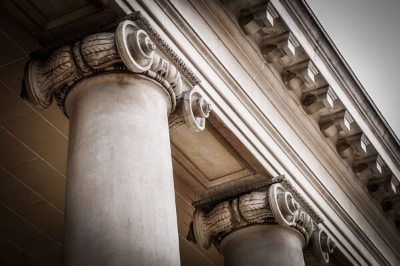The fourth floor of the American Museum of Natural History is like dinosaur heaven. It’s home to countless fossils of dinosaurs, sea reptiles and pterosaurs.
The museum’s paleontologists, including Barnum Brown and Henry Fairfield Osborn, hunted around the world for fossils. They also enlisted natural history artists such as Benjamin Waterhouse Hawkins to mount the bones. Your life-size animatronic dinosaur replicas are fantastic but this is where you see the real thing.
Hall of Vertebrate Origins
The American Museum of Natural History has just completed a seven-year renovation of its fossil halls. The new Miriam and Ira D. Wallach Orientation Center and two dinosaur halls showcase the largest collection of vertebrate fossils in the world. A thick black line on the floor outlines a giant family tree, directing visitors to alcoves with fossils of closely related organisms.
Although Osborn’s fervor for his unorthodox narrative of human evolution left the museum in a mess by the 1930s, his legacy lingers on. His classic mount of Tyrannosaurus Rex remains a quintessential image of the dinosaur for millions of visitors. Osborn’s lust for adventure also led to expensive expeditions and a dazzling array of fossil displays. But the advent of the Great Depression prompted AMNH to scale back.
Hall of Saurischian Dinosaurs
This hall explores branches of the dinosaur family tree whose members have grasping hands (a feature that differs from other fingers in shape and position). It features imposing mounts of Tyrannosaurus rex and Apatosaurus. Branching off the main path are alcoves displaying smaller groups of saurischian dinosaurs, including theropods—fearsome hunters with long arms and beaks—and maniraptors, which include on their evolutionary branch living birds.
The Museum’s dinosaur fossils are displayed mainly in the fourth floor galleries of its main building, with 85 percent of exhibit skeletons consisting of actual fossil material, rather than plaster casts. Learn more about the fossils in this hall in a live tour with Museum guide Andrew Epstein.
Hall of Ornithischian Dinosaurs
You could spend a whole day at the American Museum of Natural History and still not see all that it has to offer. In addition to dinosaur fossils there are halls devoted to gems and minerals, an extensive anthropology collection and a full-sized meteorite.
The fourth floor’s halls are home to a collection of some 100 specimens, including a Tyrannosaurus rex growth series displaying the animal from infancy through adulthood. In the Miriam and Ira D. Wallach Orientation Center you’ll find the museum’s Titanosaur, a life-sized cast of the 122-foot-long sauropod Patagotitan mayorum discovered in 2014.
The museum was at the forefront of paleontology during this period thanks to Barnum Brown and Henry Osborn who led expeditions to Mongolia and beyond in search of new fossils. The exhibits also showcase a set of 107 million-year-old dinosaur tracks found in Glen Rose, Texas.
Hall of Primitive Mammals
The museum’s fourth floor is devoted to mammals and their extinct relatives. Its Orientation Center introduces visitors to the ideas presented in this wing.
It then presents a series of clusters, or alcoves, with fossil specimens and reconstructions that represent evolutionary branching points. An example is an alcove highlighting the extinct early mammals called synapsids that shared with dinosaurs a hole behind their eyes, which evolved into the hole we use for our own eyes today.
The exhibit designers used lifelike renderings to help scientifically-minded visitors distinguish real bones from plaster ones, although this design met with skepticism from some scientists who complained that “beauty ought not to be secured at the expense of truth.” It is still one of the most compelling fossil halls in any museum.
Hall of Advanced Mammals
The museum’s anthropological collections are impressive as well. Here you can see a moai cast from Easter Island, the full-size model of a Blue Whale hanging in the Milstein Family Hall of Ocean Life, and the carved and painted Haida war canoe that made it into the film “Night at the Museum.”
The tyrannosaur may be the most famous dinosaur fossil in the world, but there are plenty more to see here. The fourth-floor Dinosaur Wing is home to countless specimens of these awe-inspiring prehistoric creatures, including the Titanosaur, which at 122 feet long barely fits in its new home. Other highlights include the Stegosaurus, whose plates were perfect for surviving an attack, and the Triceratops with its two large horns. The museum also has some great dinosaur eggs in a nest on display.

